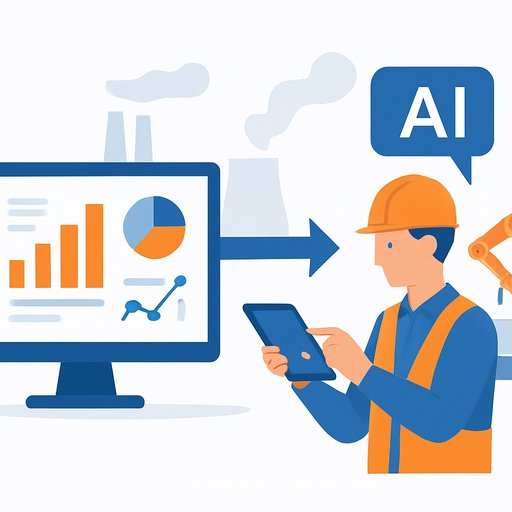HII and Shield AI Complete First Major Autonomy Test on ROMULUS USV: What Operations Teams Should Know
HII and Shield AI have finished the first major test of their integrated autonomy stack aboard a ROMULUS 20 unmanned surface vessel. The team fused Shield AI's Hivemind autonomy, via the Hivemind Enterprise SDK, with HII's Odyssey suite during a three-day event in Virginia Beach. It's the first time Hivemind has been deployed at sea, and the integration happened in under six weeks from partnership announcement to waterborne test.
For operations leaders, this is less about hype and more about compressing timelines, proving interoperability, and setting a clear path to fielding AI-enabled USVs within existing fleet constructs.
Why this matters for operations
- Cycle time: Integration in weeks, not quarters, using an open, modular SDK. That shortens test, evaluation, and deployment loops.
- Interoperability: Hivemind + Odyssey running on ROMULUS shows vendor-agnostic autonomy layers can work together without a full redesign.
- Assured ops: Hivemind is built to function in GPS- and comms-denied environments, aligning with contested maritime scenarios.
- Fleet fit: The roadmap is clear-operate alongside carrier strike groups and surface action groups, with multi-vehicle coordination baked in.
- Scalability: ROMULUS uses commercial-standard hulls and containerized payloads, easing production, sustainment, and mission reconfiguration.
What was actually tested
The trial combined Hivemind's mission autonomy with Odyssey's USV control on a ROMULUS 20. The focus was on integration through the Hivemind Enterprise SDK and validating the autonomy layer at sea. This was a capability check, not a demo reel-prove it works, then scale it.
As one executive put it, the SDK let the teams integrate "quickly and effectively," and the at-sea deployment validated the partnership's approach. Shield AI's CTO added that maritime capabilities were integrated in less than six weeks-work that typically takes much longer.
Platform details that affect planning
ROMULUS is a modular USV line. The lead vessel, ROMULUS 190, is in build and is targeted to exceed 25 knots, run up to 2,500 nautical miles, and carry four 40-foot ISO containers. That makes logistics straightforward and mission swaps fast-ISR one week, MCM the next, EW after that-without re-architecting the ship.
Odyssey is already fielded across 35+ USV platforms and 750+ REMUS UUVs in 30 countries. Adding Hivemind gives the fleet an AI autonomy layer that's proven in aerial missions and now moving into maritime operations.
Expected deployment path
- Short term: Expand maritime testing, harden interfaces, finalize TTPs for multi-agent autonomy.
- Near term: Integrate with strike group C2, verify behaviors under comms constraints, and refine COLREGs-compliant behaviors.
- Mid term: Scale across the ROMULUS line and field in teamed missions with crewed assets.
Action list for operations leaders
- Stand up a trial cell: Select a coastal test range, assign a cross-functional det (ops, engineering, cyber, data).
- Pick two payload stacks: Example-EO/IR + EW or MCM + comms relay-to stress the autonomy with real mission trade-offs.
- Map your C2 interfaces: Define data contracts, message formats, and latency budgets for both connected and disconnected operations.
- Plan for denied environments: Pre-plan behaviors, fail-safes, and human-on-the-loop interventions when GPS and SATCOM are degraded.
- Write the sustainment playbook now: Spares, software update cadence, cyber hardening, and metrics for mission readiness.
Key quotes
"Using the Hivemind Enterprise SDK, our teams integrated capabilities quickly and effectively. The successful deployment on ROMULUS 20 validates the power of this partnership and paves the way for even greater autonomy across the ROMULUS fleet," said Andy Green, president of HII's Mission Technologies division.
"Each integration strengthens Hivemind's role as the leading autonomy solution for defense systems. Through close collaboration with HII and the shared use of Shield AI's modular, open architecture SDK, we integrated advanced maritime capabilities in less than six weeks," said Nathan Michael, Shield AI's chief technology officer and head of the Hivemind business unit.
Where to learn more
Bottom line
Autonomy at sea is moving from slides to steel. The Hivemind-Odyssey integration on ROMULUS shows a practical path to fielding USVs that can handle contested environments, coordinate as teams, and plug into existing fleet operations. If you run maritime programs, now's the time to set up trials, write the playbooks, and get your people hands-on with the stack.
Your membership also unlocks:






